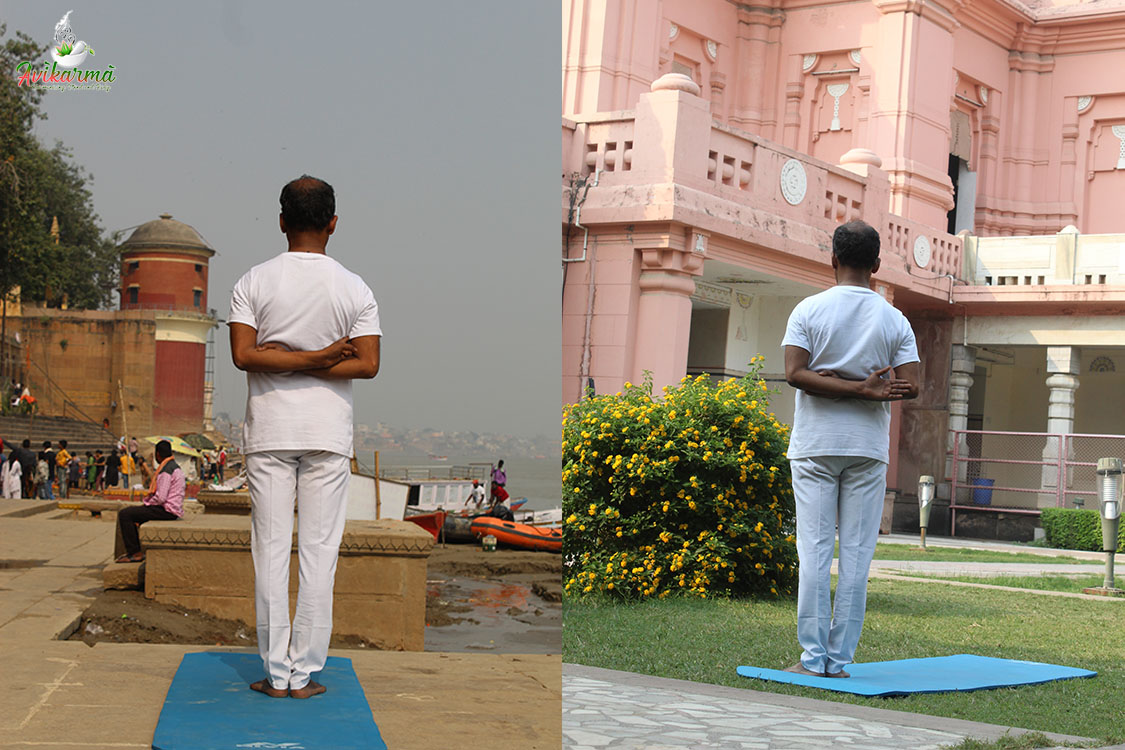About Paschima Baddha Hastasana
Paschima baddha namaskar is a basic standing posture that serves as a chest-opener and provides a strong shoulder stretch. It is a variation of tadasana, or mountain pose, which is a fundamental posture across the many styles of yoga. The name of this asana comes from the Sanskrit, tada, meaning “mountain”; asana, which translates as “pose” or “posture”; paschima, which means “west” or “back-facing”; baddha, meaning “bound” or “binding”; and namaskar, which is a respectful greeting or salutation.
Boosts confidence and helps reduce depression. Helps in the treatment of cervical spondylosis. Relieves arthritis of the shoulders, arms, wrists, and fingers. Strengthens the knee joints and reduces sciatic pain. Corrects flat feet.
- Take a standing position with your big toes touching.
- Raise up all of your toes and fan them out, then drop them back down to form a wide, solid base. If your ankles are knocking together painfully, then slightly separate your heels.
- Let your feet and calves root down into the ground.
- Engage your quadriceps and move them upward, causing your kneecaps to arise.
- Rotate both thighs inward, forming a widening of the sit bones.
- Keep the natural curves of your spine.
- Tone your belly, moving it in slightly.
- Widen your clavicles and check that your shoulders are piled over your pelvis.
- Shrug your shoulders up to the ears and then roll them backward to release your scapulae down your back.
- Let your arms hang comfortably by slightly bending the elbows and the palms facing forward.
- Your neck is long, your chin is neither tucked down nor raised up, and the crown of your head rises toward the roof.
- Once you have checked all your positioning points, take 5 to 10 breaths while you hold yourself in this pose.

